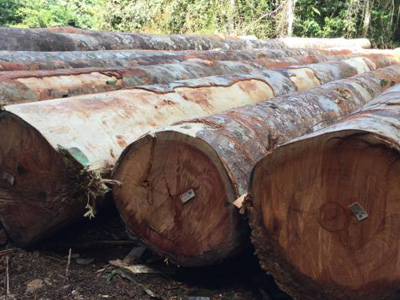DARINA
- General Details
Origin :
From East Africa to Southeast Asia and Australia; (primarily New Guinea)Color or Appearance :
Has an orangish-brown color when freshly cut, which ages to a darker reddish-brown. Color between boards can be highly variable. There are also small yellow mineral deposits found throughout the wood, making it easier to separate from other lookalikes. These yellow deposits are water-soluble and can cause staining.Grain/Texture :
Grain is straight to interlocked. Texture is coarse, with a moderate natural luster.Endgrain :
Diffuse-porous; large to very large pores, very few; solitary and radial multiples; mineral deposits occasionally present, including conspicuous yellow deposits; narrow rays, normal spacing; parenchyma banded (marginal), paratracheal parenchyma vasicentric, aliform (winged or lozenge), and confluent.Rot Resistance :
Merbau is reported to be very durable, and resists both rotting and insect attack.Workability :
Glues and finishes well, though it can be difficult to saw due to gumming and dulling of teeth.Odor :
Has a unique smell when being sawed or sanded: which can also cause irritation and sneezing.Allergies / Toxicity :
Merbau has been associated with mild allergic reactions: most common is skin irritation and a runny nose.Comman Uses :
Flooring, furniture, musical instruments, turned objects, and other specialty wood items. - Technical Info
Tree Size :
130-200 ft (40-60 m) tall, 4-5 ft (1.2-1.5 m) trunk diameterAverage Dried Weight :
51 lbs/ft3 (815 kg/m3)Specific Gravity (Basic, 12% MC) :
.68, .82Janka Hardness :
1,840 lbf (7,620 N)Modulus of Rupture :
21,060 lbf/in2 (145.2 MPa)Elastic Modulus :
2,310,000 lbf/in2 (15.93 GPa)Crushing Strength :
10,650 lbf/in2 (73.4 MPa)Shrinkage :
Radial: 2.9%, Tangential: 4.8%, Volumetric: 8.0%, T/R Ratio: 1.7

